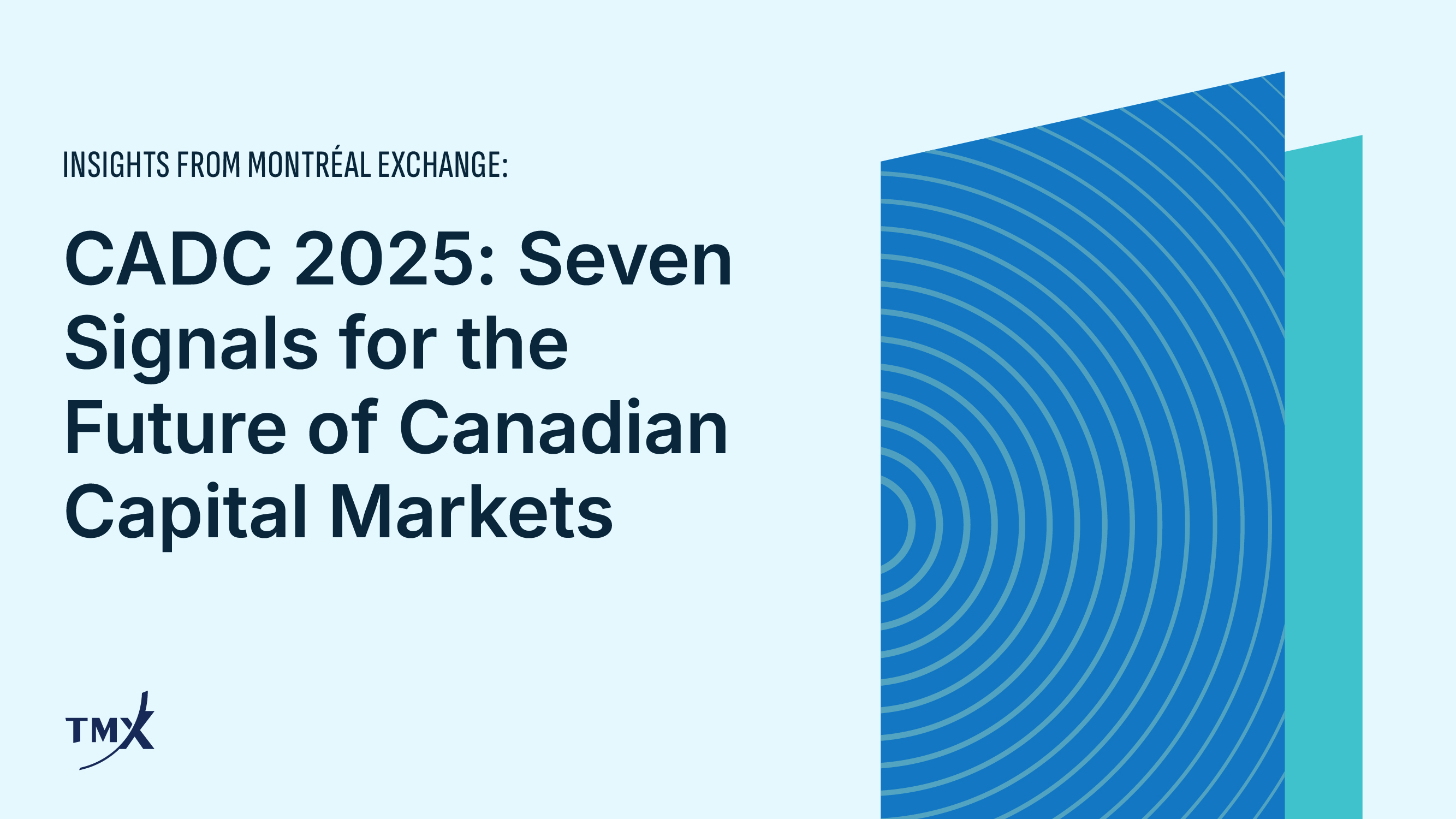Saying Goodbye to BAX: A Strategic Shift in Hedging Canadian Interest Rates
Saying Goodbye to BAX: A Strategic Shift in Hedging Canadian Interest Rates
Benchmark interest rates are crucial in directing investment strategies, shaping economic policies, and impacting lending rates in the global finance landscape. In Canada, the shift from the Canadian Dollar Offered Rate (CDOR), the recognized financial benchmark for Bankers' Acceptances (BAs), to the Canadian Overnight Repo Rate Average (CORRA) as a reference benchmark rate marks a significant transformation in the financial decision-making process. The change reflects the need for more accurate and reliable rates that align with the current economic environment and provide a clearer picture of the market conditions. That also means it is time to bid farewell to the Three-Month Bankers' Acceptance Futures (BAXⓇ) contract as the last contract is set to expire on June 17, ahead of CDOR's final publication on Friday, June 28, 2024.
Looking Back at BAX
Introduced in 1988, BAX was the first interest rate futures product listed on the Montréal Exchange (MX). It quickly gained recognition as the benchmark for Canadian short-term interest rates. The front-end futures contract was particularly favored for hedging against rising interest rates, offering a cost-effective, liquid and flexible alternative to over-the-counter products and forward rate agreements. BAX contracts are cash-settled and traded on an index basis, with quarterly delivery dates that align with the Eurodollar futures contracts. This scheduling provides investors with an arbitrage opportunity between major derivatives' markets.
Besides their primary use in hedging against interest rate fluctuations, BAX contracts complement traditional forward rate agreements by allowing investors to effectively manage exposure to interest rate movements. It also offers an opportunity to deploy sophisticated trading strategies such as spread and butterfly trades, butterfly and strips. However, most jurisdictions, including Canada, pushed for adopting risk-free rate (RFR) benchmarks, which were seen as more reliable, precipitating the cessation of CDOR and, as a result, BAX. This move also aligns with global trends toward efficiency and transparency in finance, necessitating the adoption of more dynamic and transparent alternatives.
"BAX's broad acceptance and liquidity made it a widely traded futures contract, particularly among international investors seeking exposure to Canadian short-term interest rates," said Robert Tasca, MX's Managing Director, Derivatives Products and Services. "But as markets and the regulatory environment evolved, we needed to align our product suite and adapt to RFR benchmarks, which are robust, reliable and more transparent benchmarks."
Transitioning to CORRA Futures
CORRA more accurately reflects the country's lending environment. The rate is based on actual overnight repurchase agreement transactions and offers a real-time snapshot of funding conditions. This approach provides a more reliable measure of the overnight borrowing cost, reflecting the liquidity in the financial system and the Bank of Canada's policy interventions. CORRA's methodology discourages potential issues that could arise from survey based benchmarks. In addition, it aligns with international benchmark reform efforts, underscoring Canada's commitment to upholding the highest standards in financial practices. Its adoption will ensure that Canadian financial markets align with global standards, and financial products and contracts referencing this rate will likely benefit from cross market opportunities.
MX introduced Three-Month CORRA Futures (CRA™) in 2020 as an alternative to BAX. CRA offers several benefits, such as capital and margin efficiencies compared to over-the-counter (OTC) transactions and facilitating operational efficiencies by enabling straightforward implementation and management of positions within the listed futures market. They are a valuable tool for trading relative cross-market views, hedging repo risk, offsetting funding risk, and managing exposure in existing interest rate swap portfolios.
The transition from BAX to CORRA requires financial institutions and investors to recalibrate their risk management frameworks and investment strategies to account for the potential changes in the forward looking rate versus the rate in arrears. Until June this year, investors can trade CRA alongside BAX, executing relative inter-market views by spreading CORRA futures against other existing BAX contracts or converting their existing BAX positions into CORRA contracts using the deep liquidity in CORRA-BAX spreads listed. All outstanding BAX contracts expiring after June will be converted after market close on April 26, 2024.
"We began the transition from BAX to CORRA Futures early to give market participants adequate time to prepare for the retirement of one of our oldest listed products, begin building liquidity, and minimize future risks from the transition to a new benchmark rate," added Tasca. "While the cessation of BAX marks the end of an era, the adoption of CORRA heralds a new chapter in Canadian financial markets, with the potential to enhance the stability, reliability and efficiency of financial benchmarking for years to come."
The replacement of CDOR with CORRA as Canada's benchmark interest rate is a manifest of an evolving demand for a more transparent and efficient market place. Montréal Exchange has been at the forefront of the transition to help market participants understand the changes and adapt their investment strategies accordingly. BAX is retiring, but CRA and the new One-Month CORRA Futures (COA™) are already listed on MX to support investors' interest rate hedging needs and offer participants access to a deep liquidity pool across the Canadian yield curve.
Copyright © 2024 Bourse de Montréal Inc. All rights reserved. Do not copy, distribute, sell or modify this article without Bourse de Montréal Inc.'s prior written consent. This information is provided for information purposes only. Neither TMX Group Limited nor any of its affiliated companies guarantees the completeness of the information contained in this publication, and we are not responsible for any errors or omissions in or your use of, or reliance on, the information. This publication is not intended to provide legal, accounting, tax, investment, financial or other advice and should not be relied upon for such advice. The information provided is not an invitation to purchase derivatives or securities listed on Montreal Exchange, Toronto Stock Exchange and/or TSX Venture Exchange. TMX Group and its affiliated companies do not endorse or recommend any securities referenced in this article. BAX, COA, CRA, Montréal Exchange and MX are the trademarks of Bourse de Montréal Inc. TMX, the TMX design, The Future is Yours to See., and Voir le futur. Réaliser l'avenir. are the trademarks of TSX Inc. and are used under license.



